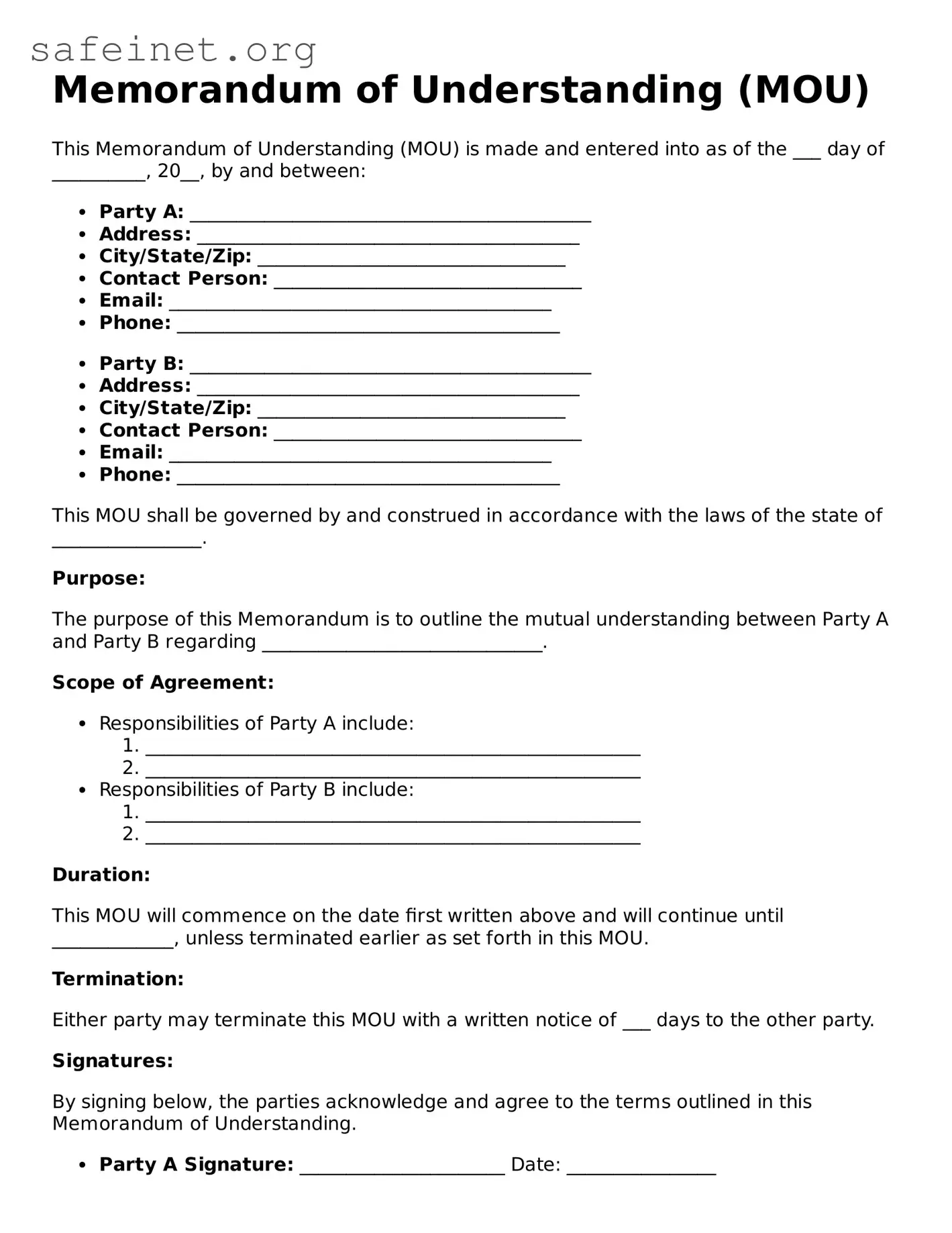What is a Memorandum of Understanding (MOU)?
A Memorandum of Understanding (MOU) is a document that outlines an agreement between two or more parties. It sets forth the intentions and responsibilities of those involved. While an MOU is not legally binding, it serves as a formal understanding that can guide the actions of the parties. It is often used in various fields such as business, government, and education whenever cooperation or collaboration is desired.
When should an MOU be used?
MOUs are ideal in situations where parties wish to establish a clear framework for working together but do not want to commit to a legally binding contract. This might include collaborations on projects, research partnerships, or community initiatives. An MOU can help clarify expectations, timelines, and resource allocations, promoting transparency and reducing the potential for misunderstandings.
What are the key elements of an MOU?
While the specific contents can vary, an effective MOU typically includes several key elements: the names of the parties involved, the purpose of the agreement, the roles and responsibilities of each party, the duration of the collaboration, and how disputes will be resolved. Clearly outlining these components can prevent future confusion and keep everyone on the same page.
Is an MOU legally enforceable?
An MOU is generally not considered a legally binding document. However, certain elements within an MOU, if worded carefully, may create enforceable obligations. It is essential to clarify the intent of the document. Parties should understand that an MOU is primarily intended as a guideline rather than a contract. Consulting with legal counsel before drafting an MOU can help clarify its implications.
What is the process for creating an MOU?
The process typically begins with discussions among the involved parties to align on objectives and expectations. Drafting the MOU should include input from all parties to ensure that everyone's interests are represented. Once a draft is prepared, it should be reviewed and agreed upon by all parties before signing. This collaborative approach fosters stronger partnerships and commitment to the agreed terms.
Can an MOU be modified once it is signed?
Yes, an MOU can be modified after it has been signed, provided that all parties agree to the changes. It is crucial to document any modifications in writing to ensure clarity and accountability. Doing so can help maintain trust and transparency throughout the collaboration.
What are the benefits of using an MOU?
Using an MOU can lead to several advantages. It promotes clear communication between parties, helping to align goals and establish mutual understanding. An MOU can streamline negotiations and foster cooperation without the complexity of a contractual agreement. Moreover, having an MOU can enhance accountability, as all parties have a reference point for their commitments.
Where can I find a template for an MOU?
Templates for MOUs can often be found online through various legal websites, academic institutions, and government resources. It is wise to use a template as a starting point, but customization is necessary to fit the specific context and needs of the involved parties. Tailoring the document will ensure its effectiveness and relevance to your particular situation.
